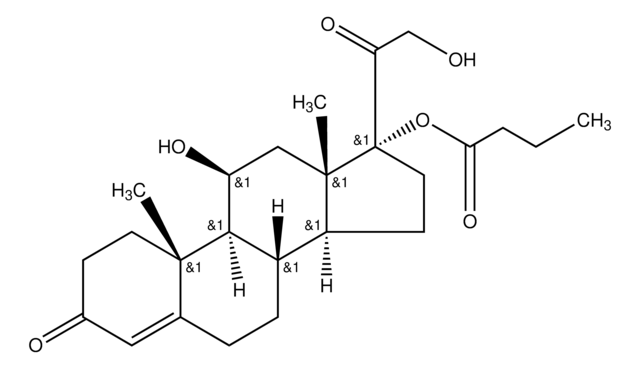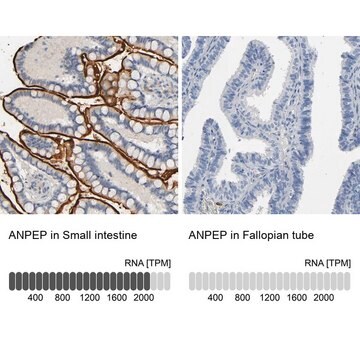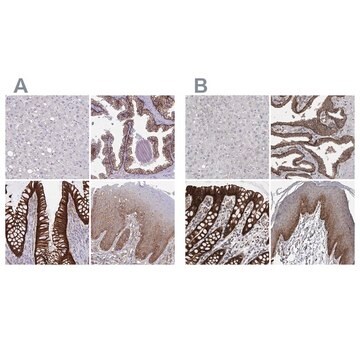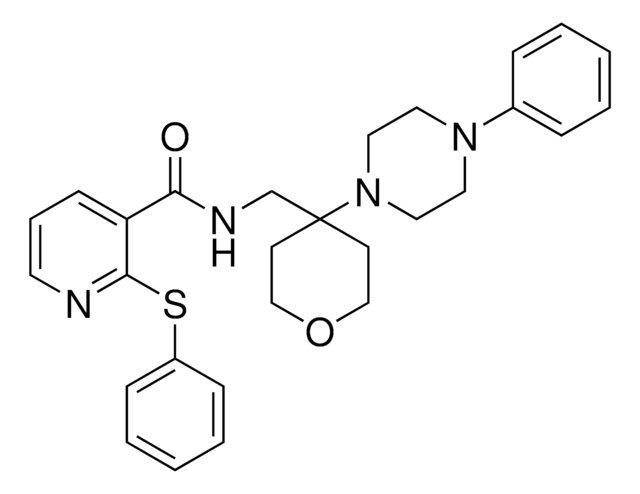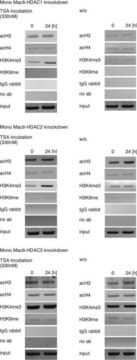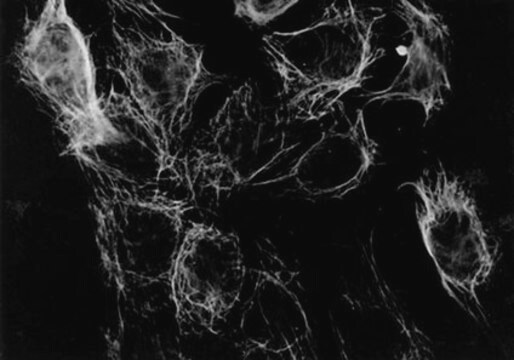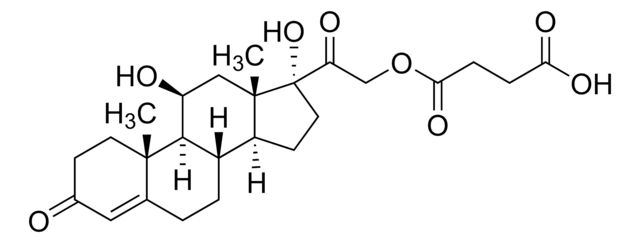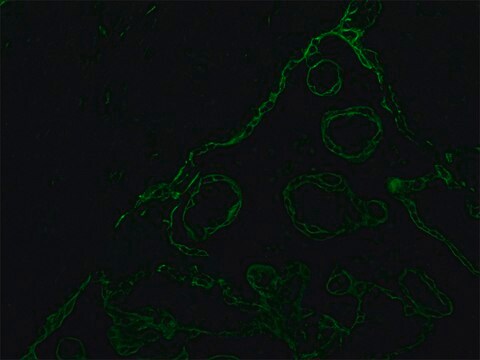MAB3404
Anti-Cytokeratin 18 Antibody, clone CK2
clone CK2, Chemicon®, from mouse
About This Item
Empfohlene Produkte
Biologische Quelle
mouse
Qualitätsniveau
Antikörperform
purified immunoglobulin
Antikörper-Produkttyp
primary antibodies
Klon
CK2, monoclonal
Speziesreaktivität
human
Hersteller/Markenname
Chemicon®
Methode(n)
immunocytochemistry: suitable
immunohistochemistry: suitable
Isotyp
IgG1
NCBI-Hinterlegungsnummer
UniProt-Hinterlegungsnummer
Versandbedingung
wet ice
Posttranslationale Modifikation Target
unmodified
Angaben zum Gen
human ... KRT18(3875)
Spezifität
Immunogen
Anwendung
Immunohistochemistry: 20 μg/mL Not for formaldehyde fixed tissues.
Optimal working dilutions must be determined by end user.
Immunohistochemistry/Immunocytochemistry Protocols:
Ideal specimens are obtained from frozen sections from shockfrozen tissue samples. The frozen sections are dried in the air and then fixed with acetone at -15 to -25°C for 10 min. Excess acetone is allowed to evaporate at 15-25°C. Material fixed in alcohol and embedded in paraffin can, however, be used, see (4). For the immunohistochemical detection of cytokeratin No. 18 in tissue sections, the tissue should not be fixed in formaldehyde as this fixative markedly reduces the staining intensity of the cytokeratin filaments. lt is advantageous to block unspecific binding sites by overlaying the sections with fetal calf serum for 20-30 min at 15-25°C. Excess of fetal calf serum is removed by decanting before application of the antibody solution.
Cytocentrifuge preparations of single cells or cell smears are also fixed in acetone. These preparations should, however, not be dried in the air. Instead, the excess acetone is removed by briefly washing in phosphate-buffered saline (PBS). Further treatment is then as follows:
• Overlay the preparation with 10-20 μL antibody solution and incubate in a humid chamber at 37°C for 1h.
• Dip the slide briefly in PBS and then wash 3 times in PBS for 3 min (using a fresh PBS bath in each case).
• Wipe the margins of the preparation dry and overlay the preparation with 10-20 μL of an anti-mouse-IgG-FITC or anti-mouse-IgG-peroxidase antibody and allow to incubate for 1 h at 37°C in a humid chamber.
• Wash the slide as described above. The preparation must not be allowed to dry out during any of the steps. lf using an indirect immunofluorescence technique, the preparation should be overlaid with a suitable embed-ding medium (e. g. Moviol, Hoechst) and examined under the fluorescence microscope.
lf a POD-conjugate has been used as the secondary antibody, the preparation should be overlaid with a substrate solution (see below). and incubated at 15-25°C until a clearly visible redbrown color develops. A negative control (e. g. only the secondary antibody) should remain unchanged in color during this incubation period.
Wash away the substrate with PBS and stain the preparation, if desired, with hemalum stain, for about 1 min. The hemalum solution is washed off with PBS, the peparation is embedded and examined.
Substrate solutions:
Aminoethyl-carbazole Dissolve 2mg 3-amino-9-ethylcarbazole with 1.2 mL dimethylsulfoxide and add 28.8 mL Tris-HCI, 0.05 M; pH 7.3, and 20 μL 3% H 2 O 2 (w/v). Prepare solution freshly each day. Diaminobenzidine Dissolve 25 mg 3,3′-diaminobenzidine with 50 ml Tris-HCI, 0.05 M; pH 7.3, and add 40 μL H 2 O 2 , 3% (w/v). Prepare solution freshly each day.
Verlinkung
Physikalische Form
Lagerung und Haltbarkeit
Sonstige Hinweise
Rechtliche Hinweise
Sie haben nicht das passende Produkt gefunden?
Probieren Sie unser Produkt-Auswahlhilfe. aus.
Lagerklassenschlüssel
10 - Combustible liquids
WGK
WGK 2
Flammpunkt (°F)
Not applicable
Flammpunkt (°C)
Not applicable
Analysenzertifikate (COA)
Suchen Sie nach Analysenzertifikate (COA), indem Sie die Lot-/Chargennummer des Produkts eingeben. Lot- und Chargennummern sind auf dem Produktetikett hinter den Wörtern ‘Lot’ oder ‘Batch’ (Lot oder Charge) zu finden.
Besitzen Sie dieses Produkt bereits?
In der Dokumentenbibliothek finden Sie die Dokumentation zu den Produkten, die Sie kürzlich erworben haben.
Unser Team von Wissenschaftlern verfügt über Erfahrung in allen Forschungsbereichen einschließlich Life Science, Materialwissenschaften, chemischer Synthese, Chromatographie, Analytik und vielen mehr..
Setzen Sie sich mit dem technischen Dienst in Verbindung.